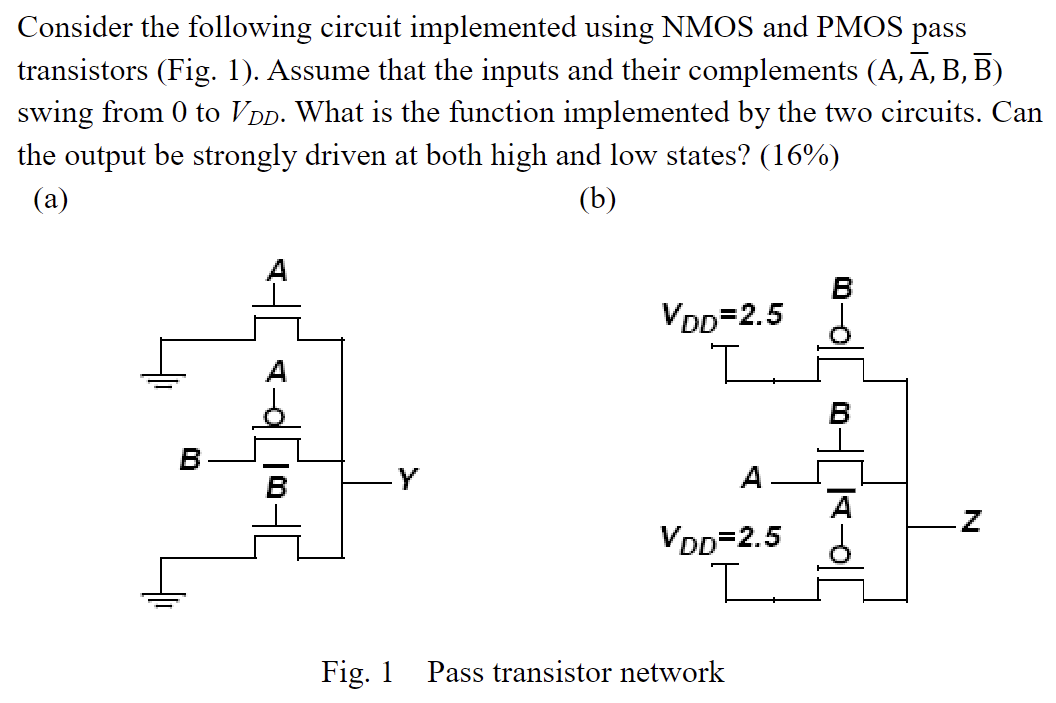Consider the following circuit implemented using NMOS and PMOS pass transistors (Fig. 1). Assume that the inputs and their complements (A, Aˉ, B, Bˉ) swing from 0 to VDD. What is the function implemented by the two circuits. Can the output be strongly driven at both high and low states? The following figure shows the circuit implemented using NMOS and PMOS pass transistors. Suppose the input and its complement (A, A', B, B') swing from 0 to VDD. What function can we achieve with these two circuits. Can the output be driven strongly in both high and low states?



You'll get a detailed, step-by-step and expert verified solution.
 Work With Experts to Reach at Correct Answers
Work With Experts to Reach at Correct Answers